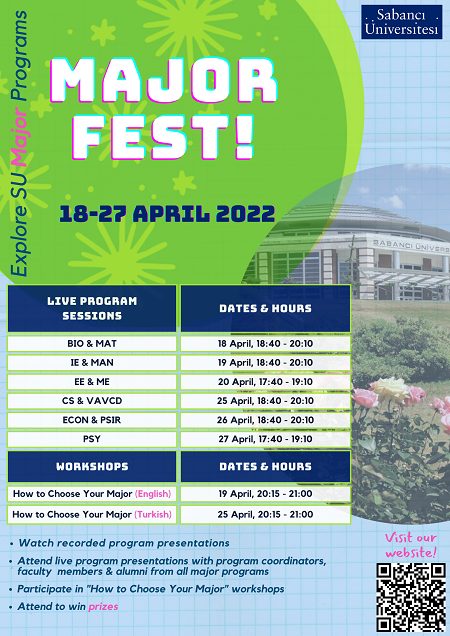13/04/2022
Major Fest will be held virtually in the period 18 – 27 April 2022 to help SU undergraduate students in their major program exploration journey.

12/04/2022
A Nano Open Seminar entitled "SMEs and Digital Transformation" will be held at 11:00 on Tuesday, April 13 2022 by Sabancı University Nanotechnology Research and Application Center. Tuğçe Sağdur Akdik, R&D and Technology Department Manager at Istanbul Chamber of Industry, will be the speaker at the seminar.
01/04/2022
In conjunction with the exhibition “The Prince's Extraordinary World: Abdülmecid Efendi,” which is still ongoing at the Sabancı University Sakıp Sabancı Museum (SSM) with the support of Sabancı Holding, the exhibition “Prince Abdülmecid Efendi and the Art of Calligraphy” is now open to visitors in the galleries of the SSM's Arts of the Book and Calligraphy Collection.